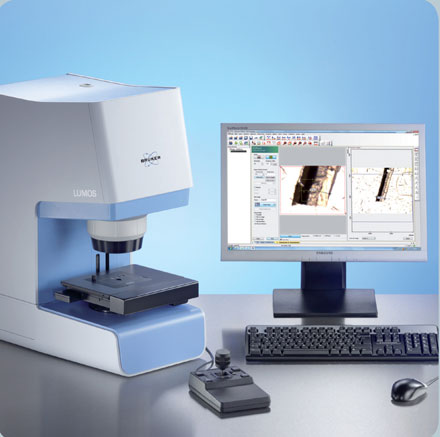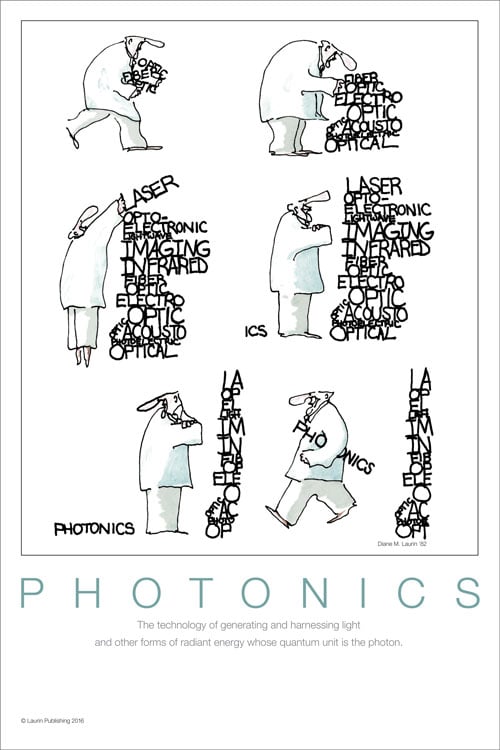February 2017
Spectroscopy Tech Pulse is a special edition newsletter from Photonics Media covering key developments in spectroscopy technology.
|
|
|
Smartphones Poised to Shake Up Spectroscopy
Headlines have screamed about smartphones “slowly killing the camera industry” and how camera makers’ “hope lies in pricey devices for the few.” Now, with the introduction of several smartphone plug-in and add-on devices that rely on light to determine the chemical makeup of materials, the iPhone is positioned to disrupt another market: spectrometers.
|
|
|
|
|
|
FTIR Spectroscopy Enables Research at Subatomic Level
With the aid of Fourier Transform Infrared (FTIR) spectroscopy and computer simulations, the mechanism that causes the proteins that control critical bodily processes to be switched off has been analyzed and described at a subatomic level.
|
|
|
|
|
|
New Imaging Technique Reduces Time to Failure in Auto Paint, Cosmetics
A commonly used method for characterizing surfaces is multispectral imaging (MSI). The challenge: MSI typically does not deliver analytical spectroscopic data. It uses relatively few, often noncontiguous, wavelength data points. Where greater sensitivity and specificity is required, a growing number of industries are turning to hyperspectral imaging microscopy (HSIM).
|
|
|
|
|
|
Hyperspectral Imaging System Could Advance Flight- and Space-Based Remote Sensing
Advances in spectroscopy imaging will be applied to the development of a hyperspectral/ultraspectral imaging system that will be used for remote sensing. The imaging system incorporates a novel camera system that uses a compressive sensing technology. The camera, which has been significantly miniaturized, requires only one-tenth of the data traditionally needed to quickly produce high-resolution images.
|
|
|
|
|
|
Breakthroughs Bring THz Spectroscopy, Sensing Closer to Mainstream
Thanks to the rapid development of THz technologies in recent decades, there has been exponential growth in companies, products and research. Advances in terahertz optical frequency comb operations have helped make possible single-mode THz emission in a wide spectral range at high powers.
|
|
|
|
|
|
 Stand Alone FT-IR Microscope with Full Automation
Stand Alone FT-IR Microscope with Full Automation
Bruker Optics Inc.
LUMOS is a stand-alone FT-IR microscope with full automation. It is designed to combine best performance for visible inspection and infrared spectral analysis with highest user comfort. Due to the motorization of all moveable components inside the LUMOS, the system provides its high degree of automation. Request Info Visit Website
|
|
|
 Laurin Publishing Announces Poster Series
Laurin Publishing Announces Poster Series
Photonics Media
Laurin Publishing Co., whose titles include Photonics Spectra and BioPhotonics magazines and the Photonics Buyers’ Guide, announces the availability of two posters featuring art that takes a lighthearted look at the early days of the photonics industry. Request Info Visit Website
|
|
|
|
|
|
An Introduction to Back Illuminated sCMOS Cameras
Tue, Feb 14, 2017 1:00 PM - 2:00 PM EST
Scientific CMOS (sCMOS) cameras are increasingly becoming detectors of choice for a range of quantitative imaging and spectroscopy applications, from astronomy to biological sciences. This webinar, presented by Princeton Instruments, will give you an overview of sCMOS camera technology and how it compares to CCD, EMCCD and ICCD low light imaging and spectroscopy detectors.
Speaker Ravi Guntupalli, vice president of sales and marketing at Princeton Instruments, will discuss: the key improvements of "back illuminated" sCMOS technology over previous generations; performance criteria of low light detectors; and how to select the optimum detector technology based on your application requirements. The webinar is aimed at both beginners and advanced users of various optical diagnostic techniques.
|
|
|
|